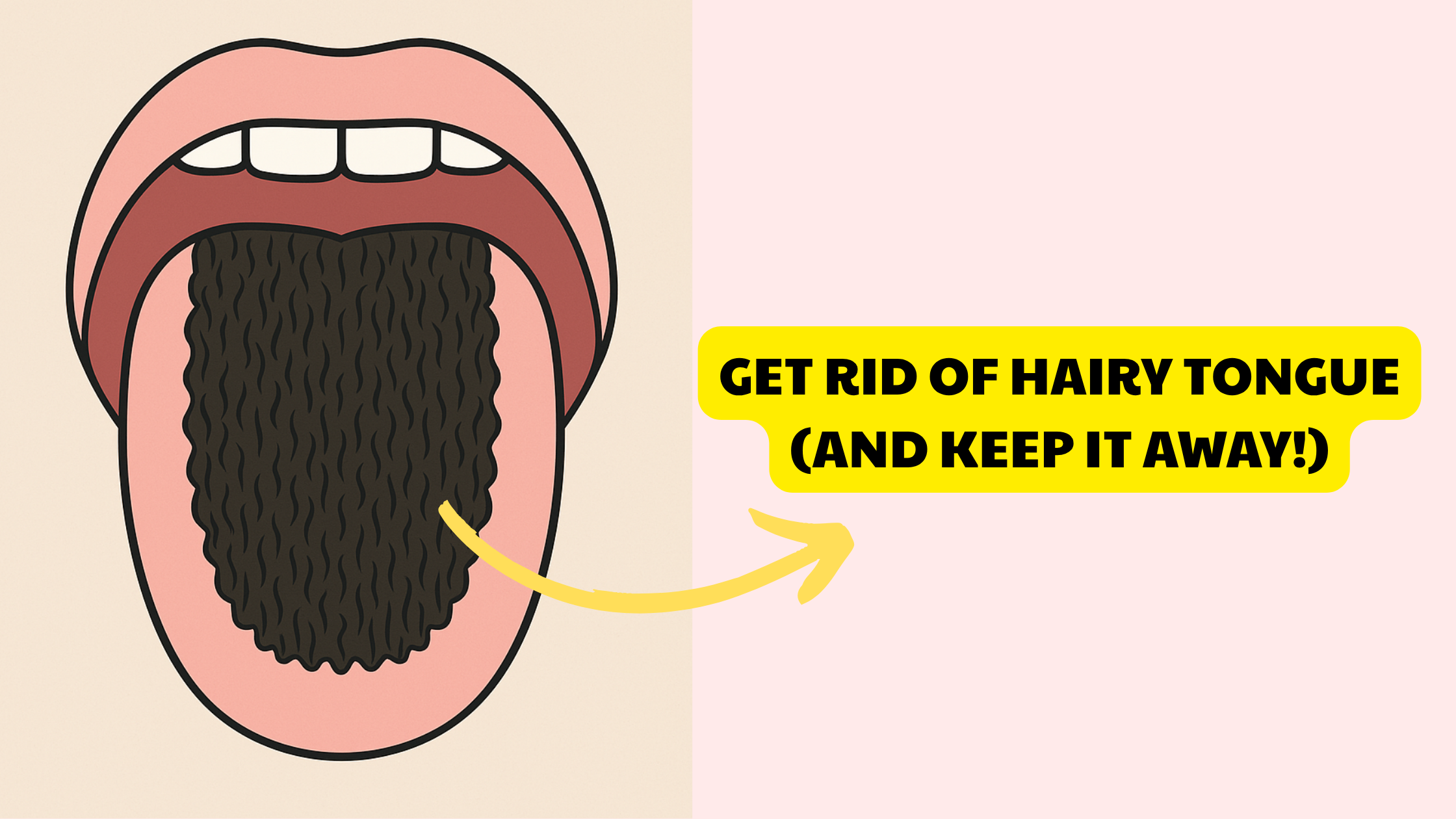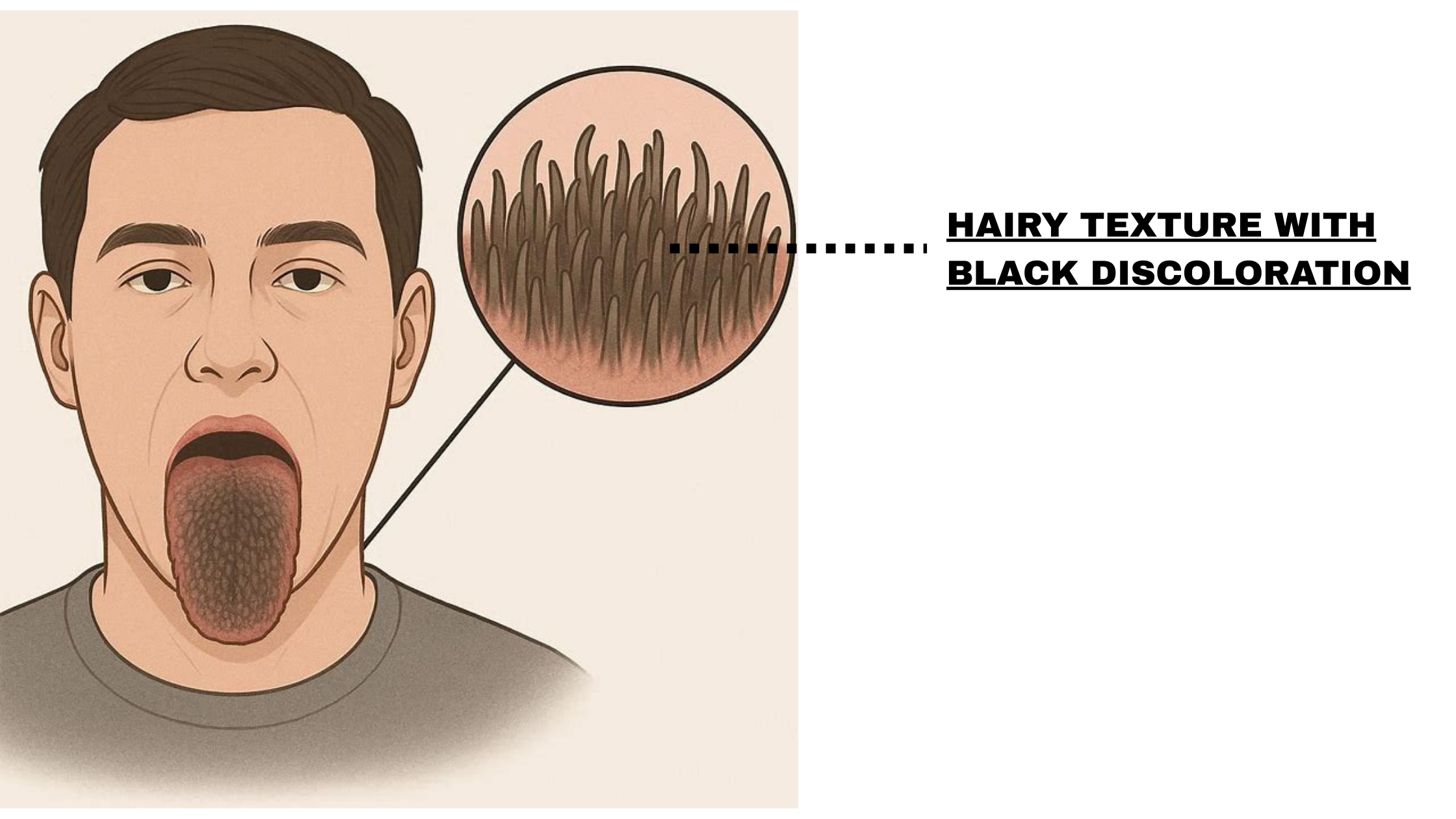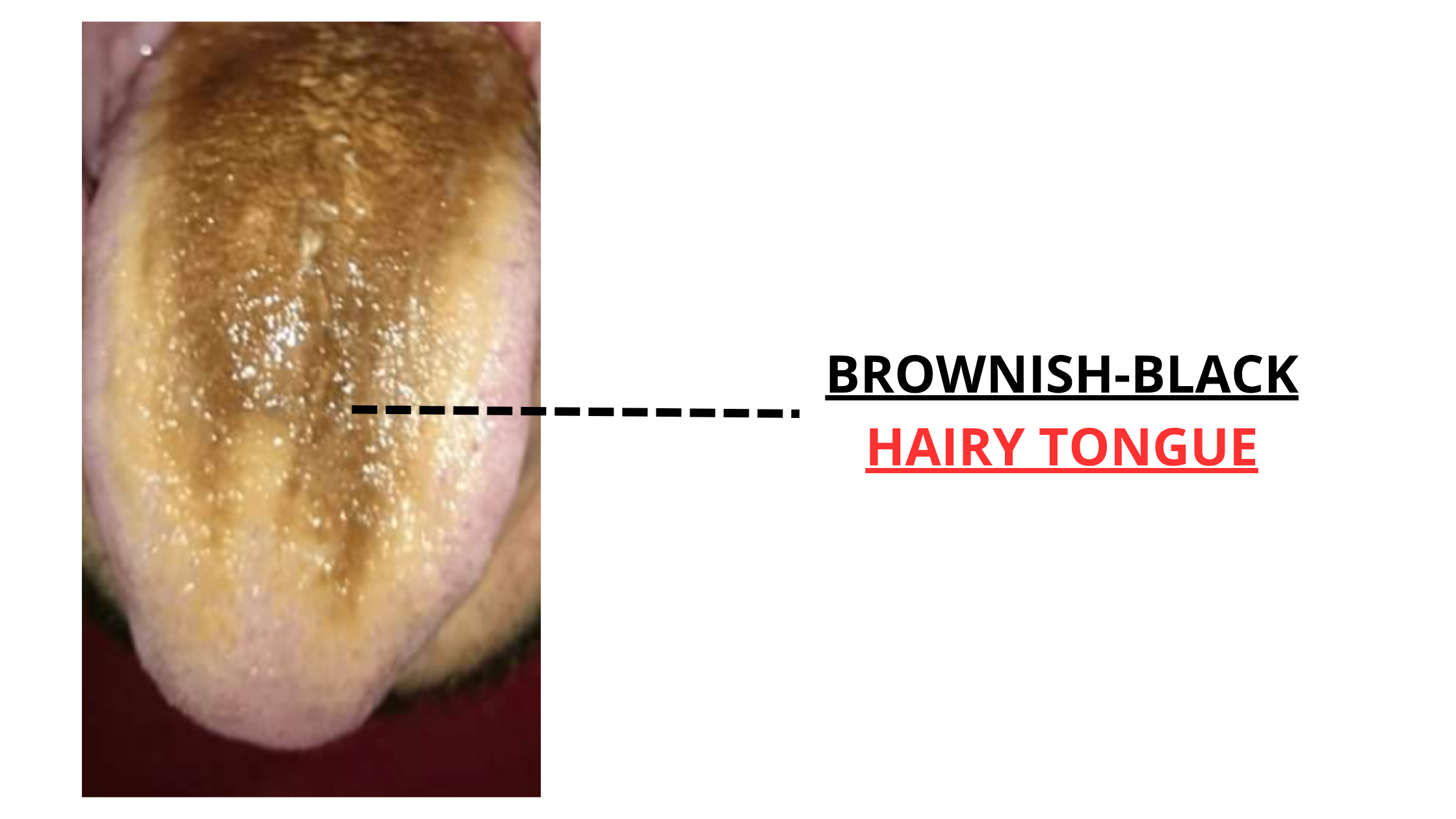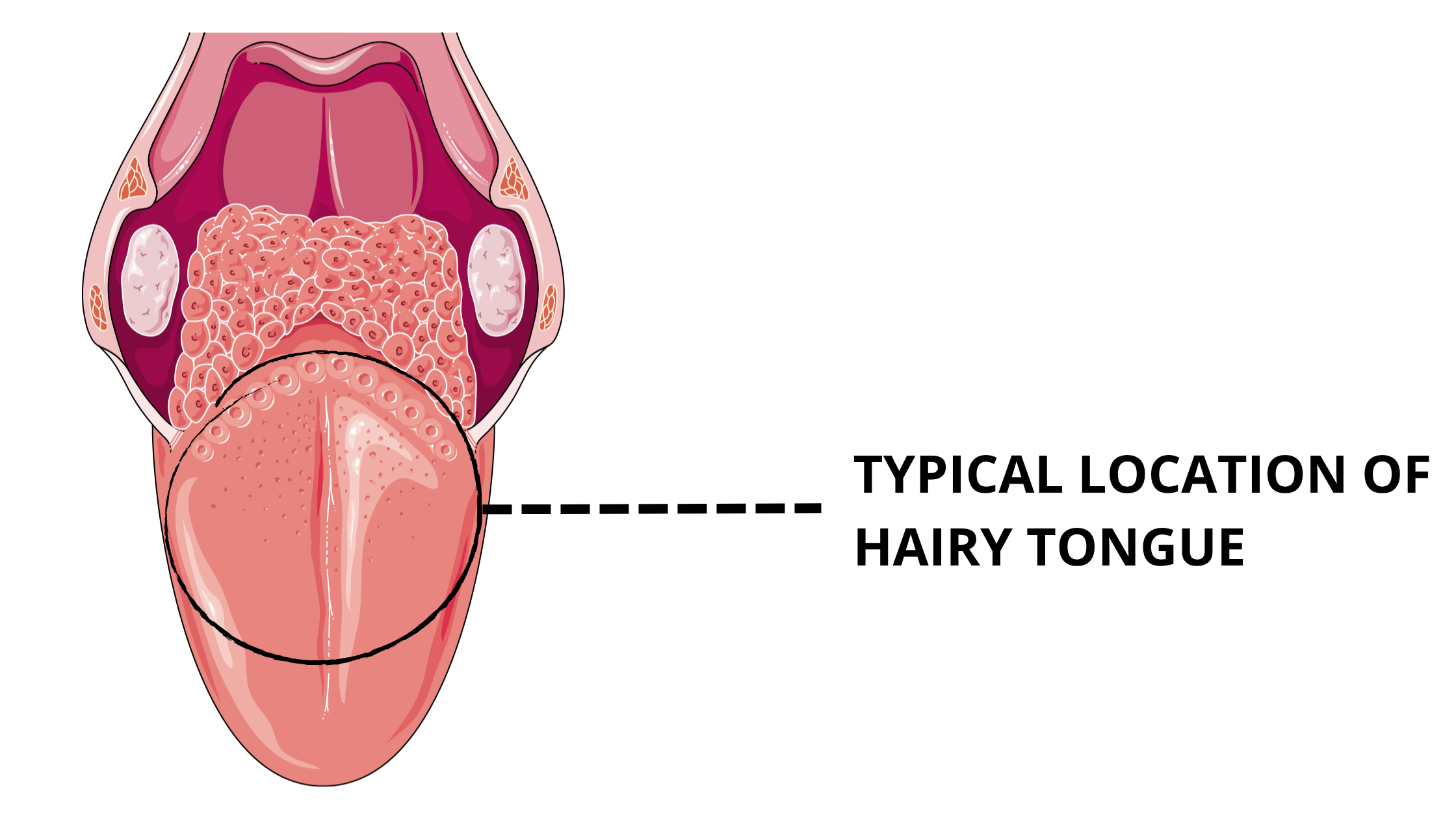Hairy Tongue: What It Is, What Causes It, and How to Treat It
 Hairy tongue is a fairly common condition that can affect people of any age, though it's more often seen in adults. Studies show that it can affect up to 11.3% of the world population.
Hairy tongue is a fairly common condition that can affect people of any age, though it's more often seen in adults. Studies show that it can affect up to 11.3% of the world population.
While it might look scary at first, the condition is harmless and can often be treated with just a few simple changes to your tongue cleaning routine.
If you've been diagnosed with hairy tongue, it's also important to spot what caused it in the first place. Addressing the root cause not only helps treat it more effectively but also prevents it from coming back.
In this article:
1. How Does Hairy Tongue Occur?
2. What Causes Hairy Tongue?
3. Why Does Hairy Tongue Often Look Dark?
4. Signs That Come with Hairy Tongue
5. Other Oral Conditions That Can Look Like Hairy Tongue
6. How to Get Rid of Hairy Tongue (And Keep It Away!)
How Does Hairy Tongue Occur?
Hairy tongue happens when two main things occur:- The filiform papillae (tiny projections on your tongue) grow too long and start looking like hairs.
- Pigmented substances build up on them, giving the tongue a colored appearance.
The filiform papillae are small, cone-shaped bumps that give your tongue its rough texture. They help you sense and chew your food.
The surface of your tongue and the papillae are made up of layers of cells. The outermost layer consists essentially of dead cells filled with a tough protein called keratin. These dead cells are normally shed and replaced by fresh ones from below.
When this renewal process slows down or stops working properly, keratin and dead cells start to accumulate. This buildup causes the papillae to grow longer—sometimes up to 12 to 18 mm in length and 2 mm in width (compared to their normal size of under 1 mm).
These elongated papillae are what give the tongue a hairy look.
The second part of the condition is discoloration. Once the papillae lengthen, they can easily trap food debris, bacteria, and yeast, which leads to staining. This can turn your tongue yellow, brown, black, green, or even blue.

What Causes Hairy Tongue?
Anything that prevents the natural shedding of the dead skin on your tongue can lead to a buildup of keratin and a hairy appearance.Here are the most common causes:
Lack of Tongue Movement
When you eat, your tongue moves around—pressing against food, your teeth, and the roof of your mouth. This natural friction helps remove dead skin from the tongue’s surface. But when your tongue isn’t moving a lot, that friction doesn’t happen, and dead cells start to build up.
What can reduce tongue movement?
- Illness (especially with fever)
- Painful mouth conditions
- Neurological disorders
- Eating only soft foods
Soft Diet
A soft diet includes foods that don’t require much chewing. These foods don’t create enough friction to remove the excess keratin, unlike harder or rough-textured foods that naturally help clean the tongue.
Poor Oral Hygiene
If you don’t clean or scrape your tongue regularly, bacteria, food debris, and dead cells can build up—contributing to hairy tongue.
Other Factors
While how exactly these factors contribute to hairy tongue isn't fully understood, studies show that the following are often linked with hairy tongue:
- Heavy smoking and alcohol use
- Heavy black tea or coffee consumption
- Dry mouth
- Medications that cause dry mouth (especially certain antibiotics and antipsychotics)
- Cancer and cancer treatments
Why Does Hairy Tongue Often Look Dark?
Hairy tongue can appear in different colors—white, yellow, green, brown, or even black.The most common color is brown to black, often referred to as black hairy tongue.

But if keratin is naturally white, why does hairy tongue often look so dark instead of staying white?
The specific color depends on what gets trapped between the papillae.
When your tongue develops hair-like projections, it becomes much easier for foods and bacteria to stick to the surface.
Some of these oral microbes are known as chromogenic, meaning they produce colored pigments. One of them is porphyrins, which stain the tongue and give it a black appearance.
Another reason is that many of the common causes of hairy tongue also lead to staining. These are coffee, black tea, and smoking.
Some antibiotics and long-term use of strong mouthwashes have been linked to black hairy tongue as well. These products may discolor the tongue directly or indirectly by promoting the growth of chromogenic bacteria and yeast.
Signs That Come with Hairy Tongue
In most cases, hairy tongue is asymptomatic, meaning it doesn’t cause pain or discomfort. Many people don’t notice anything aside from its unusual appearance.Here are the main signs that can come with hairy tongue:
Appearance
That's the most noticeable sign, and often the main concern of many patients.Although it may look alarming, hairy tongue is completely harmless and reversible.
The typical site of the condition is the middle part of the tongue, while the tip and sides often remain normal.

Gag Reflex
In some cases, the overgrown papillae can become so long that they touch the roof of the mouth (the soft palate). When this happens, it can trigger a gag reflex—especially during eating or talking.Bad Breath or Altered Taste
A common issue with hairy tongue is bad breath (halitosis) and sometimes a metallic taste in the mouth.That’s because most odor-causing bacteria live on the tongue. When the coating on the tongue becomes thicker, bacteria can overgrow, leading to bad breath and an unpleasant taste in the mouth.
Burning or Tickling Sensation
While most cases are painless, some people may experience a mild burning or tickling sensation. This is uncommon and usually not severe.Other Oral Conditions That Can Look Like Hairy Tongue
Several other oral conditions can resemble hairy tongue, so it’s important to know how to tell them apart. Here are some of the most common ones:Coated Tongue
Coated tongue is a harmless and common condition, actually more common than hairy tongue. It appears as a thick white, yellow, or brown coating caused by a buildup of dead skin, food debris, and bacteria.
Unlike hairy tongue, the papillae are not enlarged in coated tongue. This makes it easier to treat and remove than hairy tongue.
Tongue Discoloration
Your tongue naturally has a rough texture that can easily trap pigments from foods, making it look darker.
Certain medications—especially some antibiotics and antidepressants—can also cause black discoloration of the tongue. This is sometimes called “pseudo-black hairy tongue” because it looks like hairy tongue but without the hair-like projections.
Oral Thrush
Oral thrush (or candidiasis) is a common fungal infection caused by the yeast Candida albicans. It results in a white, creamy coating in any mouth area, especially the tongue.
This coating is usually easy to wipe off, revealing a red, sensitive, and sometimes bleeding surface underneath.
Oral thrush mainly affects people with weakened immune systems or unhealthy oral microbiomes. It’s less common in healthy individuals.
Leukoplakia
Leukoplakia is a condition often linked to smoking and tobacco use. It causes painless white patches in the mouth that can be either flat or slightly raised. Unlike oral thrush, these patches cannot be rubbed off.
If you notice white patches like these in your mouth, have them checked by your dentist as soon as possible. Leukoplakia can sometimes be premalignant, meaning it isn’t cancer, but has the potential to become cancer in the future.
Hairy Leukoplakia
Hairy leukoplakia is a type of leukoplakia caused by the Epstein-Barr virus (EBV). It gets its name because the white patches may have small hair-like projections.
It most often appears on the sides of the tongue, though it can affect other areas of the mouth as well.
Most healthy adults carry EBV, but the virus usually stays dormant without causing problems. When it becomes active again and causes hairy leukoplakia, it often indicates an issue with the immune system.
Hairy leukoplakia is often seen as a warning sign for HIV infection, as many HIV-positive individuals have it. So, if no other obvious reasons could be found, HIV infection should be highly suspected.
How to Get Rid of Hairy Tongue (And Keep It Away!)
If you’ve been diagnosed with hairy tongue and are worried about how it looks, don’t worry. It’s a completely harmless condition and is not linked to serious issues like oral cancer.To get rid of hairy tongue—and prevent it from coming back—treatment focuses on two main things: removing the causes and cleaning your tongue regularly.
1. Removing the Causes
- Limit or remove things that stain the tongue, such as black tea, coffee, and smoking.
- If a drug is the cause, stopping it usually helps the tongue to look normal again.
- Avoid strong mouthwashes.
- Manage dry mouth by drinking plenty of water and chewing sugar-free gum between meals.
- If your diet is mostly soft due to missing teeth, consider replacing them. Chewing harder, textured foods naturally helps clean the tongue and remove dead skin.
2. Tongue Cleaning
Make sure to clean your tongue daily by gently brushing your tongue or, even better, using a tongue scraper.
To remove dark discoloration on the tongue, you can use 3% hydrogen peroxide solution, which has a bleaching effect. But dilute it first—mix one part hydrogen peroxide with two parts water. Rinse your mouth three times a day for one week.
Another effective and affordable option is baking soda. You can use it as a mouth rinse or make a paste to brush your tongue directly. Baking soda helps with hairy tongue by:
- Relieving dry mouth
- Reducing acidity in the mouth
- Slowing the growth of harmful bacteria and yeasts
- Its mild abrasiveness helps scrub off the tongue coating